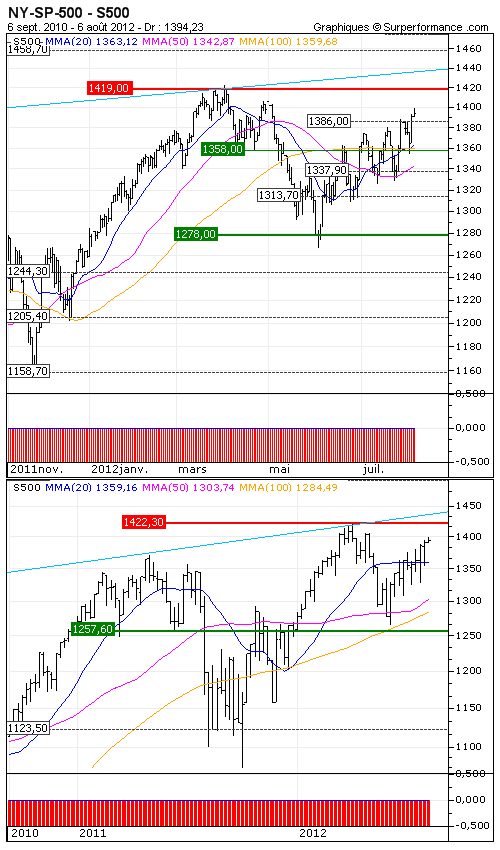S&P 500 : 'Wait-and-see' approach on the U.S. markets
By Rodolphe Steffan
The publication of the US GDP for the second quarter backed the disappointing results of companies. The US economy grew by 1.5% against 2% in the first quarter. Last Wednesday, Ben Bernanke also confirmed the current economic slowdown. However, the publication of employment numbers for the month of July helped the SP500 to move forward again. 163 000 jobs were created while analysts forecast for a gain of 100 000 units. The health-care sector and the car industry boosted employment.
Investors are worried about the unemployment rate above 8% since February 2009 (8.3% in July). Job creation in July failed to reduce it. Moreover, some market makers focus on the progression of the 'U-6' rate, which includes part-time workers who look for a full-time position and people who have given up looking for job. The figure for July stands at roughly 15%. In this sense, investors believe that further easing measures from the Fed could be in place for the month of September to boost the labor market. This summer, investors should take a 'wait-and-see' approach until new economic measures are decided.
Technically, the SP500 dynamic remains bullish above 1360 points in daily data. This level also refers to the 20-week moving average. We will monitor the exit of the range 1360/1425, a breakdown of 1360 would be critical for the end of August. On the upside, a breakout of 1425 in weekly closing would open the way to 1475 points. This index should stay within its 1360/1425 range until the end of summer.


 S&P 500
S&P 500 



